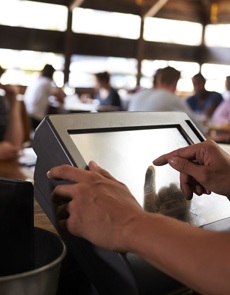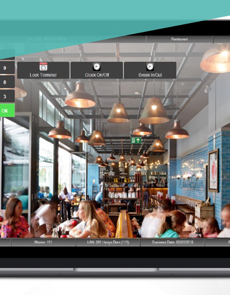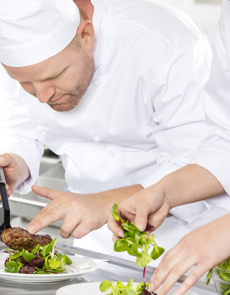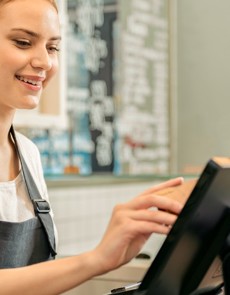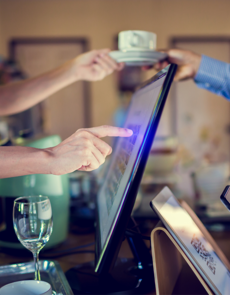10 top tips for increasing revenue with restaurant delivery software
Despite the continuing challenge of a cost-of-living crisis, the demand for online food delivery in the UK remains steadfast. According to Statistica, in June 2023, around 51% of the UK population engaged in online purchases of food and drinks – signifying a huge opportunity for hospitality operators if they’ve not yet taken the plunge. Restaurant delivery software can help you tap into this trend and gain a slice of the delivery pie.
Here at Access, we frequently support customers in building restaurant EPoS systems that can support ordering across multiple platforms, including self-service ordering, in-venue order to table and online delivery. Connecting all these points of service into one system helps operators maximise their revenue opportunities.
In this article, we’ll look at how restaurant delivery software can help your business embrace the home delivery trend – no matter your offer or target customer base. Our experts share their top tips for making home delivery a success for you.
What is food delivery management software?
Food delivery management software, also known as a restaurant delivery system, or online restaurant delivery software is a digital solution that enables customers to place food orders from a restaurant through different online channels, such as websites, mobile apps and third-party delivery platforms and feeds those orders back to a single point-of-sale in the venue.
Streamlining the ordering process for customers, restaurant delivery software helps you define and distribute your offer so customers can navigate your menu, handpick their desired items and complete their transaction securely online. Restaurants and operators benefit from having all orders delivered to a single point of sale to be processed.
What are the key benefits of restaurant delivery software?
Juggling multiple order channels can be a big change for venues, restaurant delivery software can help make the significant change to operations a lot easier to manage for teams.
In addition, there are some amazing business benefits to implementing restaurant delivery software, such as:
- Increased revenue – Delivery software makes it easier to market your offer on more channels and therefore get more orders – leading to increased sales and revenue.
- Easy updates – Your menu and prices fluctuate all the time, and food delivery software makes it easy to implement menu updates across all channels in no time.
- Happier Customers - Using a restaurant online ordering system ensures that every customer enjoys the same user-friendly and efficient order process no matter which channel they use.
- Order accuracy – One standout benefit of using delivery software in your restaurant is that integrated systems vastly reduce the instances of inaccuracy in customer orders – leading to a more positive experience for your guests.
- Kitchen management – Using a restaurant management software ensures all orders from multiple channels are streamed into one EPoS system and orders are communicated to the kitchen both quickly and in the right order.
10 top tips for getting started with online restaurant delivery
Offering deliveries from your restaurant can be an excellent way to boost sales and diversify revenue streams, but it does open up several new considerations for your on-site staff. And it’s imperative that you offer an at-home experience that aligns with the quality and taste values of your brand.
If you’re offering restaurant delivery for the first time, check out our 10 top tips from our sector specialists on how to make restaurant deliveries a success.
1. Getting your menu right
When creating a menu for delivery, there are a few things you should consider to ensure your customers have a positive experience. It’s usually a good idea to scale back your main menu and offer fewer dishes, considering which dishes will travel well and maintain quality during delivery. This not only helps to simplify your offer but will also help tempt your delivery customers in venue to try the full menu.
2. Utilise multiple restaurant delivery partners
Maximise your revenue potential and get in front of as many potential customers as possible by partnering with multiple third-party delivery platforms. Tracking menu and pricing updates across multiple partners can be tricky, restaurant delivery software can help simplify the management of the delivery offering with menu editing tools that make it easy to implement changes across multiple sites.
3. Choose reliable delivery partners
Expanding your reach and getting in front of new customers is great, but poor service from delivery partners can reflect poorly on your business. Make sure you choose reputable partners that provide a reliable and timely service. The service standard of delivery partners can be dependent on location, so this might be one to collaborate with your in-venue teams to select the best partners with good reputations.
4. Implement an efficient online ordering system
As you expand your business and take orders from multiple sources, you’ll need a robust online ordering system that brings all your orders into one streamlined platform. Your chosen system will need to be user-friendly, help your venue staff to sort and prioritise orders as they come in, and offers secure payment options.
5. Build loyalty
One of the biggest benefits of branching out into restaurant delivery is introducing you to a whole host of new, local customers. Now the goal should be turning those new customers into repeat customers and even turning delivery customers into venue customers. Special deals, discounts and promotions for delivery can help you encourage future deliveries, and an ongoing loyalty reward scheme can be great for promoting long-term customer loyalty.
6. Accurate delivery times
Setting realistic delivery time frames and communicating them clearly to your customers is very important. Taking too long over the estimated time to deliver an order can leave a bad taste in your customer’s mouth, no matter how good the food is. Use technology to track orders in real-time and keep customers up to date on the status of their delivery.
7. Don’t forget the packaging
The way your food is packaged can have a big impact on the at-home experience. Your packaging should maintain the freshness and temperature of the food, and you might also consider packaging elements separately, such as sauces, to keep food from going soggy. In addition, your packaging can say a lot about your brand. As well as branded packaging you might also think about using recyclable or eco-friendly packaging that aligns with your brand values.
8. Train your staff
It’s your venue staff who will be managing orders for delivery, so businesses need to ensure that they are given the appropriate training on delivery processes and how to manage them. As a business, you should be confident that your teams know things like when to stop accepting orders or how to prioritise orders in the kitchen to ensure expected delivery times are met. Teams should know how to use restaurant delivery software and be familiar with the tools and features to help streamline the delivery operation.
9. Ask for feedback
Customer feedback is invaluable when it comes to perfecting your restaurant delivery offer. Include an invitation to leave feedback in the delivery package to make it easy for your customers to leave feedback and listen to them! Use feedback to identify areas for improvement and deliver the best possible service quality.
10. Advertise and promote
As well as listing your delivery offering on third-party partner sites, you should market your delivery services through your own marketing channels to ensure your existing customers know they can enjoy your food at home. Even happy customers sometimes prefer the convenience of delivery at home and may well choose you again.
When to hold off on restaurant deliveries?
While kicking off a delivery service can be a game-changer for many operators, there are times when it might be best to hit pause on offering deliveries.
- Limited delivery partner options locally
Some areas are better served by delivery partner drivers than others, if you have venues in more remote areas or where delivery drivers can be scarcer – you might want to hold off on third-party platform deliveries.
- Timings
It’s important to recognise if your kitchen can fulfil the demand of both online delivery and in-venue orders, as an unreliable service for your delivery customers will do more harm than good to your reputation. This might be different for different sites depending on the location, how busy it is, and even the size of the kitchen.
- Overwhelming for staff
Juggling in-venue operations and managing a delivery service simultaneously can be a huge undertaking for your venue teams. If your restaurants are consistently busy and reaching operational limits, it might be worth reconsidering offering a delivery service until capacity for both in-venue and delivery operations can be effectively balanced.
Ready to take the next step?
In this article, we’ve looked at everything you need to know at the start of your restaurant delivery journey, including our 10 top tips for successful restaurant deliveries. This is a great place to start, and once you’ve thought about how online delivery could benefit your business – it’s time to look at where to start.
When you're ready to take the next step in expanding your operation into delivery, then we can help you. Talk to our specialist EPoS team about how to build a comprehensive restaurant point-of-sale system that can support your entire operation or grow with you as you expand your offer.
And to learn more about how our integrated EPoS can optimise your delivery operations and boost revenue, download our guide, ‘’How to Win More Customers & Boost Profits with a Smart EPoS.’’
Find out how our software can support you in the delivery journey
More about restaurant EPoS
Related resources to support you in driving efficiency and running a more profitable restaurant

